Will textualism save our copyright planet? Warhol Fdn v. Lynn Goldsmith headed to SCOTUS
Images of Goldsmith and Warhol at issue. The U.S. Supreme Court will review a ruling that an Andy Warhol print infringed a copyrighted photograph taken by photographer, Lynn Goldsmith, of the late musician, Prince. We certainly hope--as much as one can hope for anything these days--that SCOTUS cleans up the wasteland that has become of "fair use" interpretation. One would think, and hope I suppose, that with many of the sitting justices adhering to textualism, they will fully jettison the nonsensical "transformativeness" test that has plagued us like a really bad case of Covid since the mid-1990s. Docs here, via ...


Podcast: Stephanie Drawdy and Sergio Munoz Sarmiento on All Things Art and Law
Ahh...Youth! Sergio Munoz Sarmiento. (2015 - ongoing), C-Print. © and TM Sergio Muñoz Sarmiento. All rights reserved. I had a lovely conversation with fellow lawyer and artist, Stephanie Drawdy, on the NFT craze, pets, art law, and the origins of The Art & Law Program. You can listen to the Podcast here. Hope you enjoy!
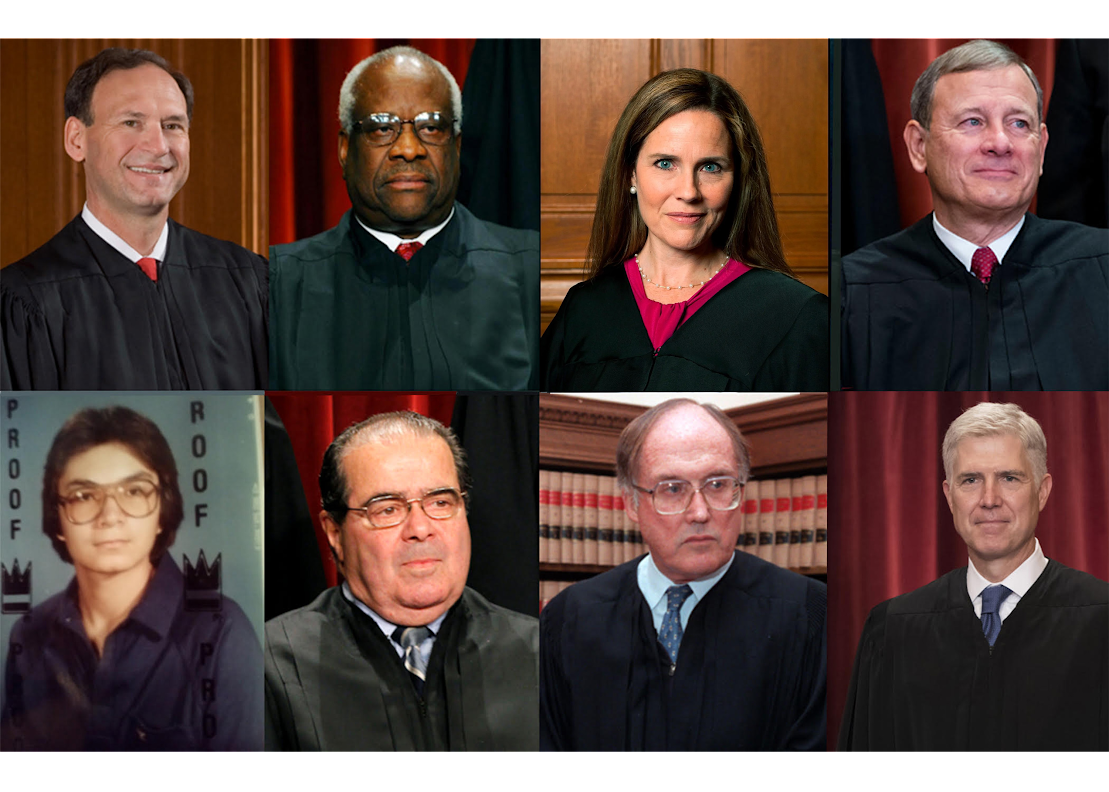

Marcel Duchamp archives now online, free of charge
The Philadelphia Museum of Art, the Centre Pompidou, and the Association Marcel Duchamp have digitized their vast archives of material on the Dadaist and placed it online, where it is free to all. Enjoy!
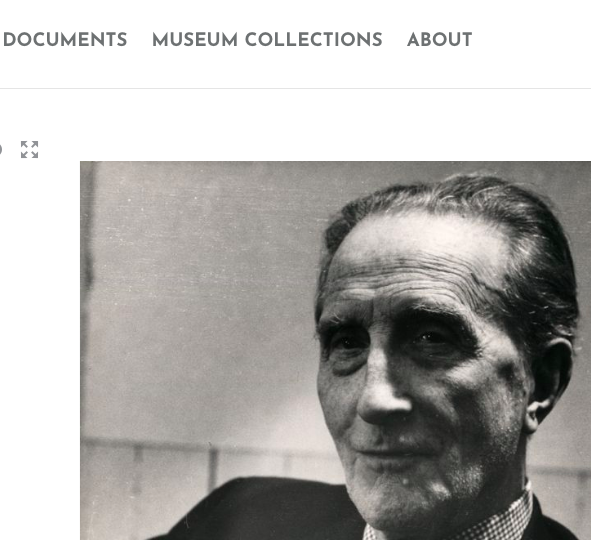

The Art & Law Coloring Book
If you have kids at home and want them to do something fun and educational, try the Art & Law Coloring Book, an ongoing project by The Art & Law Program. Really a great collection of drawings by great artists, including: Emma Jane Bloomfield Damien Davis Molly Dilworth João Enxuto Soda Jerk Clare Kambhu Alexandra Lerman Erica Love Douglas Melini Sergio Muñoz Sarmiento Melinda Shades Elisabeth Smolarz Gabriel Sosa Alfred Steiner Valerie Suter Happy coloring!


What are NFTs and what does it mean to own one?
If you're confused as to what the hell NFTs are, particularly art NFTs, here's a new article by Alfred Steiner that pretty much walks you through and safely out of the NFT hell. In his article, Steiner explains what NFTs are and what it means to own one. He also discusses why that meaning of ownership—which may appear novel to many—isn’t new at all when considered against the backdrop of the market for conceptual art. Steiner concludes with some observations about how NFTs may be good and bad for the art industry.


What are the consequences to Shepard Fairey’s recent actions? Aside from the fact that he only strengthened the image of artists as clowns and buffoons in the eyes of judges and lawyers, Fairey’s recent actions could earn him serious consequences.
So what can happen? All sorts of bad things can happen under the Federal Rules of Civil Procedure. If a plaintiff fabricated and destroyed evidence, he can have judgment entered against him dismissing his case; if it was the defendant who fabricated and destroyed evidence, he can have judgement entered against him holding him liable on the merits of the claim. The fabricating/destroying party could be ordered to pay the costs incurred by the other party as the result of the misconduct, and a party could be held in contempt, as was the defendant in Jones v. Clinton (although technically civil contempt is inappropriate if the previously withheld information has been produced). Title 28 of the United States Code, Section 1927 also provides for counsel to be held liable for causing excessive costs.
But this isn’t it. There may also be criminal sanctions — obstruction of justice, perjury, and false statements come to mind. Or criminal contempt. The Department of Justice may find this of interest.
Shepard Fairey has posted his thoughts on his website, where he admits to the following:
The new filings state for the record that the AP is correct about which photo I used as a reference and that I was mistaken. While I initially believed that the photo I referenced was a different one, I discovered early on in the case that I was wrong.
In an attempt to conceal my mistake I submitted false images and deleted other images. I sincerely apologize for my lapse in judgment and I take full responsibility for my actions which were mine alone. I am taking every step to correct the information and I regret I did not come forward sooner.
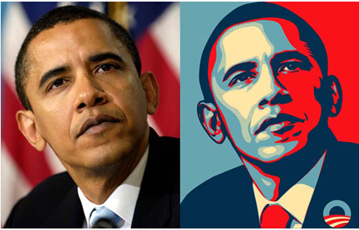
This statement was sent to Clancco.com at 9:20pm EST, from the Associated Press.
Statement from Srinandan R. Kasi, VP and General Counsel, The Associated Press
Striking at the heart of his fair use case against the AP, Shepard Fairey has now been forced to admit that he sued the AP under false pretenses by lying about which AP photograph he used to make the Hope and Progress posters. Mr. Fairey has also now admitted to the AP that he fabricated and attempted to destroy other evidence in an effort to bolster his fair use case and cover up his previous lies and omissions.
In his Feb. 9, 2009 complaint for a declaratory judgment against the AP, Fairey falsely claimed to have used an AP photograph of George Clooney sitting next to then-Sen. Barack Obama as the source of the artist’s Hope and Progress posters. However, as the AP correctly alleged in its March 11, 2009 response, Fairey had instead used a close-up photograph of Obama from the same press event, which is an exact match for Fairey’s posters. In its response, the AP also correctly surmised that Fairey had attempted to hide the true identity of the source photo in order to help his case by arguing that he had to make more changes to the source photo than he actually did, i.e., that he at least had to crop it.
After filing the complaint, Fairey went on to make several public statements in which he insisted that the photo with George Clooney was the source image and that “The AP is showing the wrong photo.” It appears that these statements were also false, as were statements that Fairey made describing how he cropped Clooney out of the photo and made other changes to create the posters.
Fairey’s lies about which photo was the source image were discovered after the AP had spent months asking Fairey’s counsel for documents regarding the creation of the posters, including copies of any source images that Fairey used. Fairey’s counsel has now admitted that Fairey tried to destroy documents that would have revealed which image he actually used. Fairey’s counsel has also admitted that he created fake documents as part of his effort to conceal which photo was the source image, including hard copy printouts of an altered version of the Clooney Photo and fake stencil patterns of the Hope and Progress posters. Most recently, on Oct. 15, Fairey’s counsel informed the AP that they intended to seek the Court’s permission to withdraw as counsel for Fairey and his related entities.
The AP intends to vigorously pursue its countersuit alleging that Fairey willfully infringed the AP’s copyright in the close-up photo of then-Sen. Obama by using it without permission to create the Hope and Progress posters and related products, including T-shirts and sweatshirts that have led to substantial revenue. According to the AP’s in-house counsel, Laura Malone, “Fairey has licensed AP photos in the past for similar uses and should have done so in this case. As a not-for-profit news organization, the AP depends on licensing revenue to stay in business.” Proceeds received for past use of the photo will be contributed by the AP to The AP Emergency Relief Fund, which assists staffers and their families around the world who are victims of natural disasters and conflicts.
You can access court filings and a timeline of Shepard Fairey’s statements Read the rest of this entry »
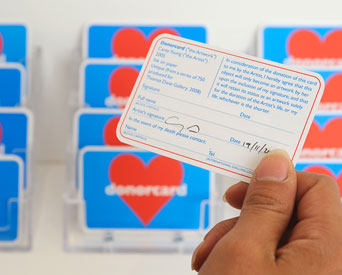
During yesterday’s Frieze Art Fair, artist Carey Young signed a limited edition art project called, Donorcard – a version of the wallet-sized British organ donor card. Visitors were able to take a card for free with the requirement that they countersign it in order for the donorcard to become art. From then on, the owners and the artist enter into a contract, which ends only with the death of the artist and/or the owner. In a seemingly symbolic gesture, the artist attempts to make the artwork viable as an artwork only during the life of the artist and owner.
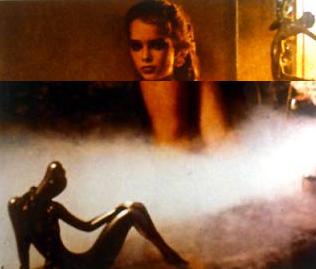 The Huffington Post has a few thoughts today on the recent Richard Prince censorship scandal over at the Tate Modern.
The Huffington Post has a few thoughts today on the recent Richard Prince censorship scandal over at the Tate Modern.
Can the removal simply be attributed to the professional vigilance of the London police’s Obscene Publications Unit? The work of overzealous monitors of public morality? Perhaps. But then again, perhaps not. Or perhaps something far more sinister, a willful censorship, striking at the very heart of artistic creativity and ultimately at our basic freedoms of expression.
The pointed question arises, why banishment in London, and why not in New York or Minneapolis or myriad other locales? Is it because the London that once was, is no longer the London of today. That it is a city whose constituency and fabric has altered dramatically in recent times. A city that has had as its mayor and has been formed in part by one Ken Livingstone, whose ideology would be well suited to what Kimball terms “pre-emptive capitulation” that forfeit the prerogatives of truth for the dubious satisfactions of multicultural self-righteousness. Where draconian aspects of Shariah law filter through, purposely losing sight that living in a modern, secular democracy there is always plenty of offense to go around. That is what has happened to Yale. If now London, where next?
Read more from the Post here.
For those of you keeping tabs on the orphan works debate:
Lost and Found: A Practical Look at Orphan Works
Tuesday, October 20, 2009
6:00 – 8:00 pm
New York City Bar Association
42 West 44th Street
New York, NY 10036
The Art Law Committee and the Copyright and Literary Property Committee of the New York City Bar Association, in conjunction with Columbia Law School’s Kernochan Center for Law, Media and the Arts, will host a public discussion of proposed legislation regarding use of “orphan works.” What standards will apply to the search for copyright owners of such works? How will infringement claims be handled? What is the role of registries with respect to such works? Join us for a discussion of these and other related issues.
Speakers:
- Brendan M. Connell, Jr., Director and Counsel for Administration, The Solomon R. Guggenheim Foundation
- Frederic Haber, Vice President and General Counsel, Copyright Clearance Center, Inc.
- Eugene H. Mopsik, Executive Director, American Society of Media Photographers
- Maria Pallante, Associate Register for Policy & International Affairs, U.S. Copyright Office
- Charles Wright, Vice President and Associate General Counsel, Legal and Business Affairs, A&E Television Networks
Moderator:
- June M. Besek, Executive Director, Kernochan Center for Law, Media and the Arts

On September 29, 2009, The Copyright Alliance and its grassroots network of creators announced circulation among creators nationwide of a letter to President Obama and Vice President Biden, asking the Administration to pursue policies supportive of the rights of artists. Clancco joins The Copyright Alliance in this endeavor and fully endorses the letter.
“Artists and creators make important contributions not only to our society and culture, but also to our economy,” said Lucinda Dugger, the Alliance’s Director of Outreach. “Increasingly, creators are finding their work misappropriated, reproduced and distributed without their knowledge, consent or benefit by those who believe intellectual property should be free for the taking. It is important that creators speak up about their works and how the principle of copyright empowers and provides incentive for creators to earn a living with their talents and ideas.”
Since the letter’s announcement and circulation, the letter has garnered over 8,800 electronic signatures. With artists encouraging participation within their personal networks on blogs and Twitter feeds, the letter already has been signed by creators in all 50 states and representing a full spectrum of creative disciplines.
You may read and sign the letter here.
Read about The Copyright Alliance’s and their full statement on the letter here.
Clancco, Clancco: The Source for Art & Law, Clancco.com, and Art & Law are trademarks owned by Sergio Muñoz Sarmiento. The views expressed on this site are those of Sergio Muñoz Sarmiento and of the artists and writers who submit to Clancco.com. They are not the views of any other organization, legal or otherwise. All content contained on or made available through Clancco.com is not intended to and does not constitute legal advice and no attorney-client relationship is formed, nor is anything submitted to Clancco.com treated as confidential.
Website Terms of Use, Privacy, and Applicable Law.

